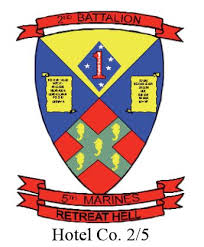 The M72 LAW (light anti-tank weapon), also referred to as the light anti-armor weapon or LAW as well as LAWS: light anti-armor weapons system) is a portable one-shot 66 mm (2.6 in) unguided anti-tank weapon. The solid rocket propulsion unit was developed in the Rohm and Haas research laboratory at Redstone Arsenal in 1959, and the full system was designed by Paul V. Choate, Charles B. Weeks, Frank A. Spinale, et al. at the Hesse-Eastern Division of Norris Thermador. American production of the weapon began by Hesse-Eastern in 1963 and was terminated by 1983. This weapon was used a lot in Vietnam.
The M72 LAW (light anti-tank weapon), also referred to as the light anti-armor weapon or LAW as well as LAWS: light anti-armor weapons system) is a portable one-shot 66 mm (2.6 in) unguided anti-tank weapon. The solid rocket propulsion unit was developed in the Rohm and Haas research laboratory at Redstone Arsenal in 1959, and the full system was designed by Paul V. Choate, Charles B. Weeks, Frank A. Spinale, et al. at the Hesse-Eastern Division of Norris Thermador. American production of the weapon began by Hesse-Eastern in 1963 and was terminated by 1983. This weapon was used a lot in Vietnam.
In early 1963, the M72 LAW was adopted by the U.S. Army and U.S. Marine Corps as their primary individual infantry anti-tank weapon, replacing the M31 HEAT rifle grenade and the M20A1 “super bazooka” in the U.S. Army. It was subsequently adopted by the U.S. Air Force to serve in an anti-emplacement and anti-armor role in airbase defense.
The weapon consists of a rocket within a launcher consisting of two tubes, one inside the other. While closed, the outer assembly serves as a watertight container for the rocket and the percussion-cap firing mechanism that activates the rocket. The outer tube contains the trigger, the arming handle, the front and rear sights, and the rear cover. The inner tube contains the channel assembly, which houses the firing pin assembly, including the detent lever. When extended, the inner tube telescopes outward toward the rear, guided by the channel assembly, which rides in an alignment slot in the outer tube’s trigger housing assembly. This causes the detent lever to move under the trigger assembly in the outer tube, both locking the inner tube in the extended position and cocking the weapon. Once armed, the weapon is no longer watertight, even if the launcher is collapsed into its original configuration. It is a line-of-sight weapon with a range of around 200 meters (660 ft).
The person firing the M72 LAW must be aware of the danger of the M72’s back blast. We used these powerful weapons often in Vietnam to blow up bunkers. I usually had someone else in my platoon carry the LAW for me, but I was always very accurate (line of sight) aim and shoot. So, I was called upon to aim and fire it when needed.
When fired, the striker in the rear tube impacts a primer, which ignites a small amount of powder that “flashes” down a tube to the rear of the rocket and ignites the propellant in the rocket motor. The rocket motor burns completely before leaving the mouth of the launcher, producing a backblast of gases around 1,400 °F (760 °C). The rocket propels the 66 mm (2.6 in) warhead forward without significant recoil. As the warhead emerges from the launcher, six fins spring out from the base of the rocket tube, stabilizing the warhead’s flight.
The early LAW warhead, developed from the M31 HEAT rifle grenade warhead, uses a simple piezoelectric fuse system. On impact with the target, the front of the nose section is crushed, causing a microsecond electric current to be generated, which detonates a booster charge located in the base of the warhead, which sets off the main warhead charge. The force of the main charge forces the copper liner into a directional particle jet that, in relation to the size of the warhead, is capable of a massive penetration.
A unique mechanical setback safety on the base of the detonator grounds the circuit until the missile has accelerated out of the tube. The acceleration causes the three disks in the safety mechanism to rotate 90° in succession, ungrounding the circuit; the circuit from the nose to the base of the detonator is then completed when the piezoelectric crystal is crushed on impact.
The LAW is located under my right arm in this picture. 


